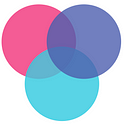Pick your favorite app, now give me a 2 year roadmap of how we can increase revenue of the product. Product Management Interview
Strategic Insights and Analytics Question, for Product Management interviews.
What is this product management question about?
This is one of the more complicated questions I’ve seen come up in Google Product Management Interviews. This product management question, combines a few interview types together.
- Strategic Insights Question — where you should first identify opportunities for the company/product to increase revenues.
- Execution Question — after selecting your strategy, you will need to build a roadmap for how to bring the new idea to reality.
- Estimation Question — the interviewer might follow-up asking you to estimate the revenue potential of your idea.
That’s three different product management interview questions in one! But don’t worry, as always I used a Framework to approach this question.
How do you answer this question?
Use the CASE Framework…
- Clarify & Set Context: (1) ask the interviewer questions (2) set the structure (3) set context by explaining how your favorite app works, and generates revenue.
- Analyze: Use the SWOT (strength, weaknesses, opportunities, threats) framework to see how the company could make money.
- Brainstorm Solutions: List 3–5 ways you could reach your goal which is to increase revenue and capitalize on some of the SWOT finding.
- Evaluate: Pick some criteria such as (1) revenue potential (2) effort (3) alignment with company mission (4) user value) and choose which one of your 3–5 ideas fits the criteria the best.
Example Answer
Clarify & Context
Explain your structure…
Alright, to answer the question you asked I will:
- Explain how my favorite product works, and establish the goal
- Analyze the market
- Lay out the strategic options
- Evaluate the options, and pick one to create a roadmap for, for the next 2 years.
Provide context…
What? My favorite product is HeadSpace and it’s mission is to reduce stress.
How does it work? It is a meditation app that connects students with guided meditation videos that are pre-recorded. People pay a monthly or annual subscription in order to use the app.
Ask any clarifying questions…
Given that you mentioned “revenue”, I am assuming our goal is to make more money for HeadSpace in the next two years and the idea I choose should focus on this goal. Is that correct? Yes.
Set goals…
- If we’re focused on revenue, I know HeadSpace makes more money as monthly subscriptions grow, that means we need to either (1) reduce churn of existing users or (2) increase adoption of new users.
- This focus to increase revenue, very nicely supports what is best for the users — to reduce stress. We know people become less stressed the more they practice medication through the app. So it’s kind of a little a win / win — get more users to use the app, fulfills the mission of the company and our users goals.
- We can achieve revenue growth by either (1) expanding our product line to capture a new market or (2) increase penetration in the existing market.
Narrow down the goal…
In this case, capturing the existing market might be quite hard:
- I know that HeadSpace is a pretty popular application. Many companies offer HeadSpace for free or at a discount to employees as a wellness benefit already. HeadSpace was a first mover in this app-based meditation market.
- We could get more people to learn about HeadSpace — but it’s super popular already within its target market, most professionals know about it and when people tell others they are stressed, the common answer is “Have you tried HeadSpace”
- We could convert more people that install the app to pay with incremental improvements — but HeadSpace has tried a variety of improvements, like adding new types of meditations and really optimizing it’s sign up and subscriptions flow.
For the reasons above, I would like to narrow down our scope to focus on entering a new market, so we can increase revenue for HeadSpace. Later on I will establish if it’s better to focus on reducing churn, new user adoption or both.
Do you need help with Product Management Interviews? Book a call with me! Start your mentorship here for free.
Analysis
Use the SWOT (strength, weaknesses, opportunities, threats) framework to help you brainstorm what solutions you might propose to increase revenue.
Strengths:
- It’s existing user base that may be devoted to wellness, and willing to try new products
- Wealth of educational material on wellness
- Corporate contracts
Opportunities:
Since I mainly see the app being used by professionals, we can try to expand our offering to other audiences, since insurance is covering more and more health services, and companies and institutions are eager to add support for mental health:
- Seniors, through contracts with assisted living facilities that will pay for seniors to use the app This can help seniors alleviate the stress of aging and assisted living.
- Anyone seeking mental health services, through individual therapists, or inbound/outbound facilities that will provide a free download of the app to those in need, paying via government grants. This will help people have extra support to traditional mental health services.
- Youth, by partnering with schools and universities. This will help youth alleviate the stress of pursuing education.
Threats
- The competitor Calm app
- In person or live online meditation classes
- Indirectly, therapy offered online
- Also indirectly other workshops and class the company hosts that user might pick over a meditation app
Weaknesses
- Potential churn: once the person learns how to meditate on their own, they may not need the app anymore and will unsubscribe.
Solutions
Based on the opportunities, threats, weaknesses and strengths you outlined above, it’s time to come up with some ideas.
I propose the following ideas:
- Partner with High Schools, Universities and Assisted Living Communities to expand into new market segments (1) youth and (2) seniors that may be going through a tough time, and can learn to meditate through the app.
- Build a product for therapists so they can (1) see how much their clients are meditating thought the app, (2) assign them other useful wellness exercises and (3) provide supplementary wellness education material.
- Build a new system where therapists provide 1:1 online therapy to existing HeadSpace users.
Evaluate
Pick criteria and benchmark your ideas against that criteria.
I will evaluate the above ideas on the following criteria:
- Alignment with mission and user value — which is to reduce stress
- Revenue potential
- Effort
I would choose Option #3–1:1 online therapy because:
- It uses the strength HeadSpace already has (1) meditation and wellness videos and materials that can help therapists attract new clients and (2) the network of companies that already offer HeadSpace to their employees, that can start offering HeadSpace Therapy and pay per employee.
- It partners with substitutes, in a way that creates value for both. Instead of ignoring that people have other alternatives to learn meditation and get mental health support, this approach partners with therapists and helps them find clients.
- It is aligned with the mission of HeadSpace to reduce stress
- It has a high revenue potential, opening up a new revenue stream! HeadSpace will take 20% of each therapy session.
Follow-up Question: Ok, so what is the roadmap for the next 2 years?
Yep, so our goal is to create a platform where health care practitioners can provide therapy sessions to clients through HeadSpace, while also giving them access to learn meditation through the app:
- In 3 months: we will conduct interviews with mental health practitioners about what they want from this kind of platform, and also get a signal from the companies we are already partnered with on the adoption
- In 6 months: we will finish building the MVP. While building we will sign up mental health practitioners for a VIP list, and ensure we meet all regulatory standards.
- In 1 year: we will be able to open up the beta, meeting all health care standards.
- In 1.5 years: we’d like to have 10K people using this offering
- In 2 years: we most likely will scale to 50K people and continue iterating on the product.
Like what you’ve read?
I’m Angelina Fomina, and I’m a Product Manager at Facebook, Oculus VR, and ex-Shopify. I also built a 7 figure start-up, and thriving non-profit. I didn’t learn to speak english till I was 12, and I didn’t study a technical degree in University. I also didn’t even know Product Management was a career path until way into my 20s. Now, I’m here to help you build a career you love and tell you that you can thrive in Product Management too!
Angelina Fomina
Follow me on X, LinkedIn, or Book a 1:1 Call
Visit angelinafomina.com for free goodies!
Whenever you’re ready, here’s how I can help…
- Sage Careers Program: a one-of-a-kind BootCamp to help you switch careers in tech with an online curriculum, a hands-on project in a real company, and mentorship in as little as 3 months.
- Join Ambition, Redesigned: One bite-sized, actionable tip a week. Everything to help you, ambitious human, lead a better and healthier life without sacrifice and toxic productivity. Covering career and personal growth, psychology, mental health, and spirituality.
- 1:1 Coaching: we’ll create a personalized plan to help you through any life or work transition, or choose from my existing programs here.
- Consulting: bring me on as a product manager, consultant, or with a trusted team for product strategy, new product launches, product design, or user research. Bonus points, if you’re working on tech for good.

